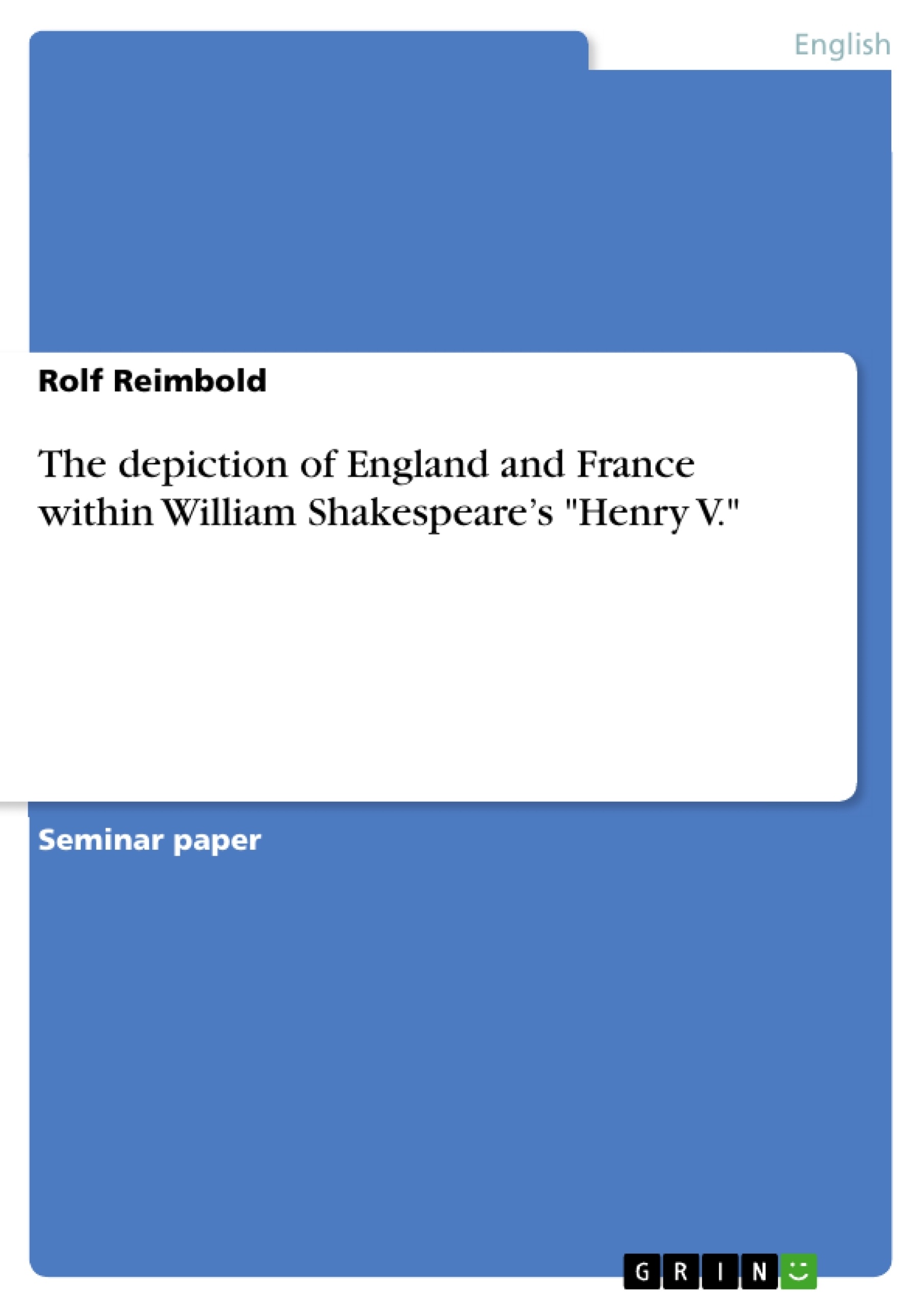1. Introduction
“Normans, but bastard Normans, Norman bastards!” (Shakespeare, Arden 3.5.10)
This exclamation of the Duke of Britain when he thinks of the English invader King Henry and his approaching army is a testimony of the cordial dislike of the French towards their English enemy. Within Henry V there are many more instances of the French being prejudiced against the English but also vice versa.
However, the quotation above does not only contain a token of the French aversion against their opponent in the Hundred Years War – the setting of this history play by William Shakespeare – but also alludes to the fact that the two nations are somehow interwoven – a circumstance that will be dealt with later on.
Within this paper on Shakespeare’s Henry V, I will take a closer look at the ways in which the two nations describe themselves and are described by others, as well as at the textual evidence that sheds light on some of the national prejudices that the English and the French have against each other. Finally, I will search for those points in the play that indicate a sort of closeness between the two parties.
Concerning the choice of words, it has to be mentioned that, for the sake of simplicity, the terms England and the corresponding adjective English shall be synonymous with the totality of England, Scotland, Wales and Ireland, the four peoples that are fighting together under King Henry against the French.
Inhaltsverzeichnis (Table of Contents)
- Introduction
- Portrayal of the English and the French as two separate entities
- Portrayal through the parties themselves
- The courageous and united English
- The cowardly and boastful French
- Language issues
- Portrayal through others
- The Chorus
- The English about the French
- The French about the English
- Not so different though – interconnection of the English and the French
- Conclusion
Zielsetzung und Themenschwerpunkte (Objectives and Key Themes)
This paper examines the portrayal of the English and French in Shakespeare's Henry V, analyzing the ways in which they describe themselves and are described by others. The paper also explores the national prejudices that the two nations hold against each other and seeks to identify points in the play that indicate a closeness between them.- The depiction of English and French national identities in Henry V
- The use of language and rhetoric to create distinct national identities
- The exploration of prejudice and stereotypes between the English and the French
- The potential for reconciliation and unity between the two nations
Zusammenfassung der Kapitel (Chapter Summaries)
- The introduction establishes the context of the paper by exploring the animosity between the English and French as depicted in the play, as well as hinting at the potential for interconnection between the two nations.
- This chapter explores the ways in which the English and French are portrayed through their own actions and words. The English are presented as courageous, united, and determined, while the French are depicted as cowardly, boastful, and divided.
- This chapter further explores the portrayal of the two nations through the perspectives of others, including the Chorus, the English perspective on the French, and the French perspective on the English.
- This chapter delves into the complex relationship between the English and the French, highlighting the elements that suggest a connection or shared history between them.
Schlüsselwörter (Keywords)
This paper focuses on the depiction of national identity, prejudice, language, and unity in William Shakespeare's Henry V. The analysis explores themes of Anglo-French relations, national stereotypes, and the potential for reconciliation in the context of the Hundred Years War.- Citar trabajo
- Rolf Reimbold (Autor), 2012, The depiction of England and France within William Shakespeare’s "Henry V.", Múnich, GRIN Verlag, https://www.grin.com/document/191200




